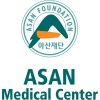
Fondaparinux Trial With Unfractionated Heparin (UFH) During Revascularization in Acute Coronary...
Acute Coronary SyndromeThe purpose of this study is to compare the safety of two different dose regimens of unfractionated heparin (UFH) during a percutaneous coronary intervention (PCI) procedure in patients with UA (unstable angina)/NSTEMI (non ST segment elevation myocardial infarction) who have been initially treated with fondaparinux.

Safety Study of 5-Azacitidine and Standard Donor Lymphocyte Infusion (DLI) to Treat Acute Myeloid...
Myelodysplastic SyndromeAcute Myeloid LeukemiaThis open label phase-II trial evaluates hematological response of an additional treatment with 5-Azacitidine to common DLI in patients with MDS or AML relapsing after allogeneic stem cell transplantation.

Donor Natural Killer Cells After Donor Stem Cell Transplant in Treating Patients With Advanced Cancer...
Brain and Central Nervous System TumorsChronic Myeloproliferative Disorders8 moreRATIONALE: Giving an infusion of natural killer cells from a donor after a donor stem cell transplant may help kill any remaining cancer cells after the transplant. PURPOSE: This phase I/II trial is studying the side effects and best dose of donor natural killer cells when given after a donor stem cell transplant in treating patients with advanced cancer.

Treadmill Training and Orthotic Use in Infants With Down Syndrome
Down SyndromeThis study determines the effect of orthotic use in combination with treadmill training on the development of gross motor skills and walking onset in infants with Down syndrome.

Combination Chemotherapy, Donor Stem Cell Transplant, Tacrolimus, Mycophenolate Mofetil, and Cyclophosphamide...
LeukemiaLymphoma1 moreRATIONALE: Giving chemotherapy, such as fludarabine, busulfan, and cyclophosphamide, before a donor peripheral blood stem cell transplant helps stop the growth of cancer cells and helps stop the patient's immune system from rejecting the donor's stem cells. When the healthy stem cells from a donor are infused into the patient they may help the patient's bone marrow make stem cells, red blood cells, white blood cells, and platelets. Sometimes the transplanted cells from a donor can make an immune response against the body's normal cells. Giving high-dose cyclophosphamide together with tacrolimus and mycophenolate mofetil after transplant may stop this from happening. PURPOSE: This phase II trial is studying how well combination chemotherapy works when given together with a donor stem cell transplant, followed by tacrolimus, mycophenolate mofetil, and high-dose cyclophosphamide, in treating patients with high-risk hematologic cancer.

Evaluating the Effectiveness of a Community Exercise Program to Reduce the Risk of Metabolic Syndrome...
Metabolic SyndromeBlack Americans with a family history of early heart disease tend to have a group of risk factors that can contribute to heart disease. These risk factors, which include excess body weight, high blood pressure, and high cholesterol, are known collectively as metabolic syndrome. This study will compare a community-based, coach-led exercise program to an individual, self-led home-based exercise program to determine which program is more effective at reducing the metabolic syndrome risk factors that can lead to heart disease.

Study of Reduced Toxicity Myeloablative Conditioning Regimen for Wiskott-Aldrich Syndrome (WAS)...
Wiskott-Aldrich SyndromeWiskott-Aldrich syndrome (WAS) is a rare X-linked congenital immune-deficiency syndrome and hematopoietic stem cell transplantation (HSCT) has become a curative modality. But the transplant with the conventional conditioning resulted in high incidence of treatment related toxicities and non-myeloablative conditioning resulted in high incidence of engraftment failure. Recently, fludarabine based reduced toxicity myeloablative conditioning regimen was developed for adult myeloid malignancies with promising result of good engraftment and low treatment related toxicities. To increase the engraftment potential without serious complication, reduced toxicity myeloablative conditioning regimen composed of fludarabine, busulfan, and thymoglobulin is designed for Wiskott-Aldrich syndrome.

Early Versus Delayed Enteral Feeding to Treat People With Acute Lung Injury or Acute Respiratory...
Respiratory Distress SyndromeAdultAcute respiratory distress syndrome (ARDS) and acute lung injury (ALI) are medical conditions that occur when there is severe inflammation and increased fluids in both lungs, making it difficult for the lungs to function properly. Hospital treatment for a person with ALI/ARDS often includes the use of a breathing machine, or ventilator, until the person is able to breathe without assistance. Initiating proper nutrition through a feeding tube early in a person's hospital stay may help to improve recovery, but the optimal timing, composition, and amount of feeding treatments remain unknown. This study will evaluate whether early or delayed full-calorie feeding through a feeding tube is more effective in reducing recovery time and increasing survival rates in people with ALI/ARDS.

Effects of the Ivabradine on Reduction of Inflammatory Markers in Patients With Acute Coronary Syndrome...
Acute Coronary SyndromesThe purpose of this study is to investigate whether a pure heart rate-lowering agent (Ivabradine) reduces vascular inflammatory stress in patients with acute coronary syndromes

Thymoglobulin and Cyclosporine in Patients With Aplastic Anemia or Myelodysplastic Syndrome
Myelodysplastic SyndromeAplastic AnemiaThe goal of this clinical research study is to learn if combining the drugs thymoglobulin, methylprednisolone, cyclosporine, and G-CSF (NeupogenTM or NeulastaTM ) can help to control severe aplastic anemia (AA) or hypoplastic myelodysplastic syndrome (MDS). The safety of this combination therapy will also be studied.
